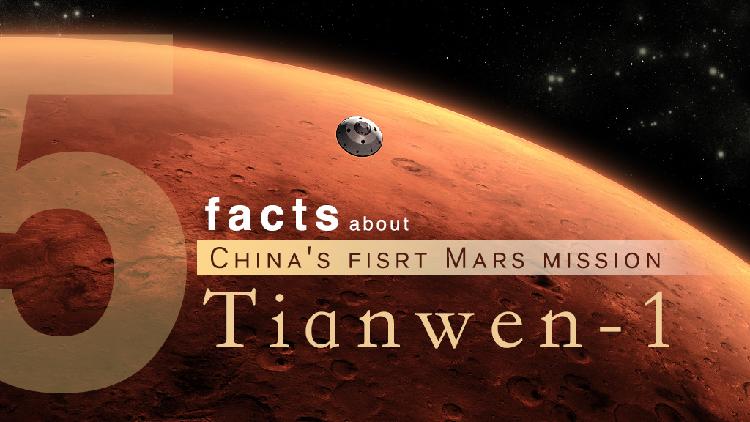The space race has seen numerous notable achievements since it began in the 1950s, and one of the latest impressive feats has been China’s Tianwen-1 mission to the planet Mars. Launched by the Chinese National Space Administration (CNSA), this mission represents a significant milestone in the Asian country’s space exploration, demonstrating its technological capabilities and its ambition to become a leading power in space exploration.

Launch and Journey to Mars
The Tianwen-1 mission, whose name means “Questions to Heaven” in Chinese, was launched on July 23, 2020 from the Wenchang Satellite Launch Center on Hainan Island. Using a Long March 5 rocket, the spacecraft successfully lifted off and began its approximately seven-month journey to the red planet. This mission not only sought to orbit Mars, but also land a lander and deploy a rover, making it one of the most ambitious missions ever attempted by China.
Mission Components
Tianwen-1 consists of three main parts: the orbiter, the lander and the rover. Each of these components had specific objectives that would contribute to the overall understanding of the Martian environment.
The Orbiter
The Tianwen-1 orbiter is designed to map the surface of Mars and analyze its atmosphere. Equipped with a series of scientific instruments, such as high-resolution cameras and spectrometers, the orbiter has been collecting data that helps scientists study the planet’s geology, climate and atmospheric composition. It aims to provide a complete view of Mars from orbit, complementing data collected by previous missions from other space agencies.
The Landing Module and the Rover
The Tianwen-1 lander, carrying the Zhurong rover, made a successful landing on Utopia Planitia, a vast plain in the northern hemisphere of Mars, on May 14, 2021. This achievement made China the second country to successfully landing a rover on Mars, after the United States.
The Zhurong rover, named after the god of fire in Chinese mythology, weighs about 240 kg and is equipped with scientific instruments designed to study the surface and subsurface of Mars. These instruments include panoramic cameras, a ground-penetrating radar, a magnetic field detector and a meteorological analyzer. These instruments are designed to investigate the topography, soil structure and meteorological conditions in the Utopia Planitia region.
Scientific Objectives
The Tianwen-1 mission has several key scientific objectives:
Study the Morphology and Geology of Mars: Through its orbiter and rover, Tianwen-1 seeks to map the surface of Mars and analyze its geological characteristics, which will help better understand the geological history of the planet.
Investigate Soil and Subsoil Composition: Using ground-penetrating radar and other instruments, the mission aims to study the structure and composition of the Martian soil and subsoil, searching for signs of water ice and other important minerals.
Analyze the Martian Atmosphere: The orbiter is equipped to study the atmosphere of Mars, providing data on its composition and dynamics, which is crucial to understanding the planet’s current climate and conditions.
Explore Meteorological Conditions: The Zhurong rover is collecting meteorological data on the surface of Mars, including temperature, atmospheric pressure and wind speed. This information is vital for future manned missions and the possible colonization of the planet.
Impact and Future of Chinese Space Exploration
The success of the Tianwen-1 mission has demonstrated China’s growing capabilities in space exploration. It has not only established China as a key competitor in the space race, but has also significantly expanded human knowledge about Mars.
Tianwen-1’s achievement has also inspired future missions. China is already planning additional missions to Mars, including collecting Martian soil samples and returning them to Earth, as well as possible manned missions to Mars in the coming decades.